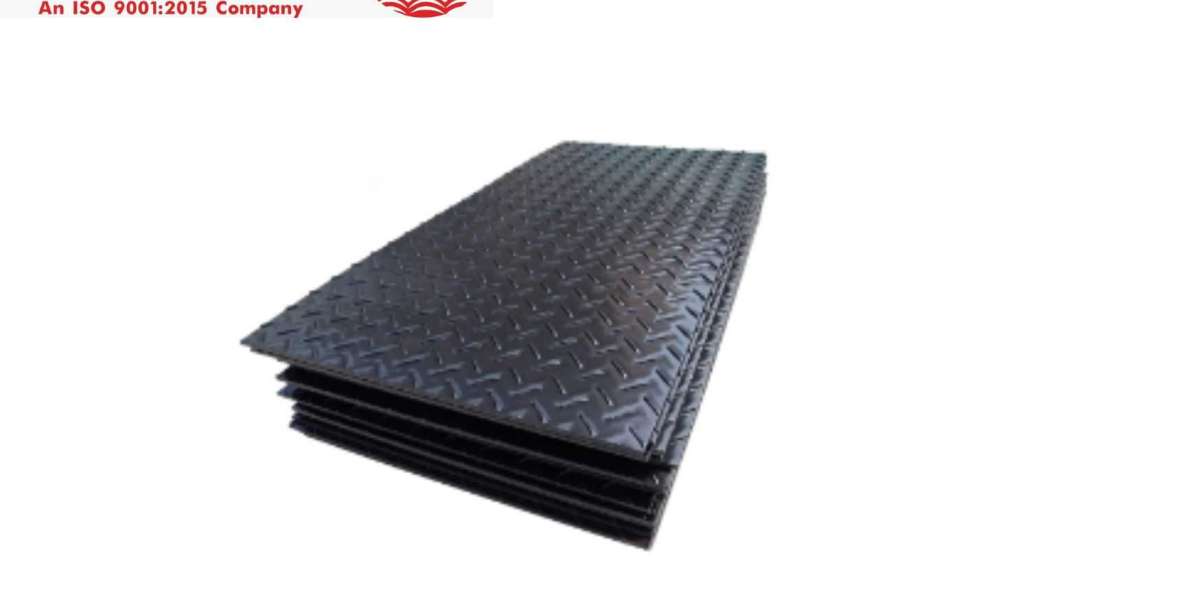In the world of construction, ensuring that work sites are not only safe but also minimally disruptive to the environment is crucial. Heavy machinery, constant foot traffic, and equipment can cause significant damage to the ground, leading to soil erosion, compacted ground, and other environmental challenges. This is where ground protection mats come into play, offering a durable and efficient solution for protecting the ground from damage while supporting the weight and movement of heavy equipment. Ground protection mats, particularly those made from HDPE (High-Density Polyethylene), have become a staple in many industries. Similarly, composite mat manufacturers have contributed to advancing the durability and versatility of ground protection mats, making them suitable for a wide range of applications.
The Growing Importance of Ground Protection Mats
Ground protection mat systems are designed to provide a stable and safe surface for vehicles, machinery, and workers. These mats distribute weight evenly, preventing the ground from becoming compacted, rutted, or damaged by the intense pressures that heavy machinery can impose. This is particularly important in industries such as construction, landscaping, and events, where maintaining the integrity of the ground is essential.
One of the key benefits of Ground protection mat is that they allow work to be carried out efficiently without causing long-term damage to the landscape. Whether it's a temporary road over soft ground or a staging area for heavy equipment, these mats provide a safe working surface while minimizing the environmental impact.
HDPE Ground Protection Mats: A Durable Solution
HDPE ground protection mats have gained popularity due to their exceptional strength, durability, and flexibility. HDPE is known for its resistance to chemicals, moisture, and UV radiation, making it an ideal material for use in outdoor environments. These mats are lightweight yet incredibly strong, capable of supporting the weight of heavy machinery without breaking or warping.
One of the major advantages of HDPE ground protection mats is their ease of installation and portability. These mats can be laid down quickly and removed just as easily, making them a versatile solution for temporary worksites. Additionally, they are reusable, which makes them an environmentally friendly option compared to traditional methods of ground protection, such as plywood or metal sheets.
HDPE mats also offer excellent grip and traction, reducing the risk of slips or skids for vehicles and machinery. This feature is particularly useful in wet or muddy conditions where maintaining stability is a challenge. These mats come in various sizes and thicknesses, allowing them to be customized for specific project requirements, whether that’s supporting light vehicles or extremely heavy equipment.
Composite Mat Manufacturers: Innovation in Ground Protection
While HDPE mats are a popular choice, Composite mat manufacturer have been instrumental in pushing the boundaries of what ground protection mats can achieve. Composite mats are typically made from a combination of high-strength materials, such as HDPE, fiberglass, and other polymers, providing even greater durability and flexibility than single-material mats. These mats are designed to withstand even the harshest environmental conditions, making them suitable for long-term use in demanding work environments.
Composite mats are particularly useful in applications where ground stability is crucial, such as in oil and gas drilling sites, renewable energy projects, and military operations. These mats are built to last, with a focus on minimizing maintenance and replacement costs. The composite materials used in these mats provide a higher load-bearing capacity and are resistant to cracking or breaking, even under the most extreme conditions.
In addition to their strength, composite mats are designed with interlocking systems, which allows them to be securely fastened together to form a stable and continuous surface. This interlocking feature makes them ideal for large-scale projects, where a seamless and durable ground cover is required over a significant area.
The Applications of Ground Protection Mats
Ground protection mat solutions are essential across a variety of industries. In construction, these mats provide a stable surface for cranes, trucks, and other heavy equipment, preventing the ground from being churned up or damaged during excavation or building processes. Additionally, they help create temporary roadways and access points for vehicles, which can be particularly useful in remote or environmentally sensitive areas.
In the events industry, ground protection mats are often used to protect sports fields, parks, or other public spaces from damage during large events, such as concerts or festivals. These mats ensure that the area can be used immediately after the event without extensive repairs or replanting.
Another important application is in landscaping and gardening, where HDPE ground protection mats are laid down to prevent machinery from damaging lawns, gardens, or delicate ecosystems. This allows landscaping work to be carried out efficiently without negatively impacting the environment.
In the energy sector, especially in oil and gas operations, ground protection mats are vital for creating safe and stable working environments. Composite mats, in particular, are used to provide a platform for drilling rigs and heavy equipment, ensuring that operations can continue smoothly, even in challenging terrains.
Sustainability and Environmental Considerations
One of the major benefits of using ground protection mats, particularly those made from HDPE or composite materials, is their sustainability. These mats are reusable and recyclable, reducing waste and minimizing the need for disposable materials such as wood or metal sheets. By using HDPE ground protection mats, companies can significantly reduce their environmental footprint while still carrying out essential work on sensitive ground surfaces.
Moreover, the longevity of these mats means that they can be used across multiple projects, reducing the need for frequent replacements and the associated costs. This long-term durability is not only beneficial for the environment but also helps construction companies, event organizers, and industries save money in the long run.
Composite mats, in particular, are designed with sustainability in mind. The materials used are often sourced from recycled plastics, and the manufacturing process is optimized to reduce energy consumption and waste. This focus on sustainability aligns with the growing demand for eco-friendly construction solutions in industries around the world.
Conclusion
In the construction and industrial sectors, ground protection mats have become an indispensable tool for safeguarding the integrity of the environment while ensuring the safety and efficiency of operations. Whether made from HDPE or composite materials, these mats provide a durable, cost-effective, and environmentally friendly solution for protecting the ground from the wear and tear of heavy machinery and foot traffic.
Composite mat manufacturers have taken the concept of ground protection mats to the next level, offering high-performance products that can withstand even the most challenging conditions. Meanwhile, HDPE ground protection mats continue to be a popular choice due to their lightweight design, durability, and resistance to environmental factors. Both types of mats offer excellent ground protection while minimizing environmental impact, making them ideal for a wide range of applications.
As industries continue to prioritize sustainability and efficiency, ground protection mats will play an increasingly important role in helping companies meet these goals. By choosing the right type of mat for their needs, companies can protect both their worksite and the environment, ensuring that projects are completed safely, efficiently, and with minimal disruption.
Frequently Asked Questions
Q1: What is the purpose of ground protection mats?
Ans: Ground protection mats are designed to protect the ground from damage caused by heavy equipment and foot traffic. They provide a stable surface for vehicles and machinery, preventing soil compaction, erosion, and other environmental damage during construction or other activities.
Q2: What makes HDPE ground protection mats ideal for outdoor use?
Ans: HDPE ground protection mats are lightweight, durable, and resistant to chemicals, moisture, and UV radiation. These characteristics make them ideal for outdoor use, where they can withstand harsh environmental conditions while providing reliable ground protection.
Q3: How do composite mat manufacturers contribute to sustainability?
Ans: Composite mat manufacturers often use recycled materials to produce mats that are strong, durable, and environmentally friendly. These mats are designed for long-term use, reducing the need for frequent replacements and minimizing waste, making them a sustainable choice for various industries.







